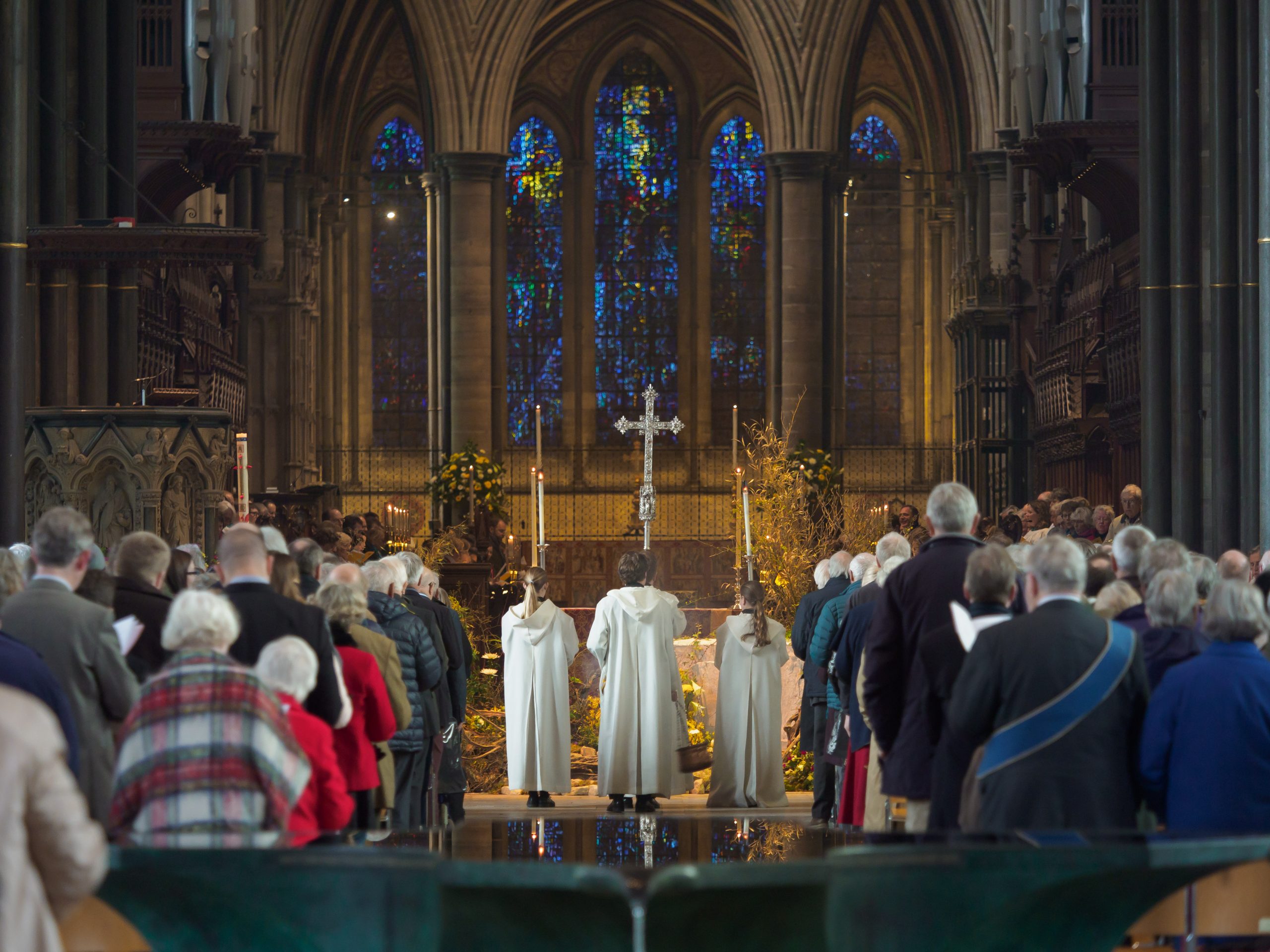A Sermon for the Second Sunday of Epiphany
The Second Sunday of Epiphany, 14 January 2024
The Sung Eucharist with the Dedication of New Altars for Salisbury Cathedral
The Dean’s Sermon
1 Samuel 3: 1-10
John 1: 43 – end
Every year, commissioned market research into the profile of the Cathedral’s summer visitors makes interesting reading. It was a relief to learn that our visitor numbers in 2023 exceeded our visitor numbers in 2022 by more than a quarter. It was a relief to learn that they were back to their pre-Novichok levels. And it was a relief to learn that in 2023 as many came to Salisbury from overseas as they did those far-off days before Covid.
No, the Dean has not drunk the Kool-Aid and pledged his allegiance to the cult of profit, percentage, and public placation: longing for people to come here is not a financial imperative – it is a Gospel imperative. Jesus speaks to Philip in words that he repeats time and again in different ways throughout all four Gospels: ‘What are you looking for…come and see…follow me’. Human encounter with Christ invariably begins at his invitation – not at his dictation or his direction. The research affirms the vocation of the Cathedral to do what it does best – to issue the invitation that Christ issues, and to offer the welcome that Christ offers: an invitation to all humankind, and a welcome to all humankind.
As some of you have heard me say before: ours is the highest spire in England; ours must also be the widest doorway in England; and ours must be the lowest threshold in England. Christ’s words of invitation, part of our Eucharistic liturgy since the First Prayer Book of Edward VI, are now etched into the Portland stone of the Spire Crossing altar. ‘Come to me’ (three words, Bishop). They will be read by all who make their way down the central Nave aisle; they will hold those of us who work and worship here regularly to account; and they will remind us daily that hospitality is the greatest virtue of the faith we claim to profess.
But, of course, the human encounter with Christ only begins with his invitation. It does not end there. ‘Follow me’ Christ says to Philip, and it’s been observed that that sounds like a really good idea – until it becomes clear where Christ is leading. For to respond to his invitation is to be confounded, challenged, and changed. The Trinity Chapel altar stands before the Prisoners of Conscience window, itself a reminder that there is no escaping this violent and fear-filled world: we have no choice but to immerse ourselves in it, and to seek for it the peace, justice, and reconciliation that are God’s will. The text inscribed on the new altar there is George Herbert’s wrenching, tortured acknowledgement that Christ’s invitation, however gently issued, is an invitation to be confounded, challenged, and changed – for ever. The trite pastoral idyll so often and so wrongly associated with England’s greatest Christian poet seems far off as Herbert writes:
‘A HEART alone
Is such a stone,
As nothing but
Thy power doth cut’.
The human encounter with Christ transforms the human heart, supplanting our obdurate flintiness with his living flesh and blood. More Kool-Aid: on arrival at the Cathedral in 2023, 32% of our summer visitors self-identified as practicing Christians. On leaving the Cathedral, 80% of our summer visitors said that their visit had been a reflective or spiritual experience. They may have come to absorb the history, or gaze at the architecture, or simply because their coach tour brought them here en route to Bath and a jolly good cream tea. But the overwhelming majority leave having been somehow moved by this place.
Incised around the rim of the Spire Crossing altar are the eight ‘O’ Antiphons familiar from what I suppose could be called Salisbury’s signature Advent liturgy. Seven are titles of honour drawn from the Hebrew Bible and addressed by the Church to Christ; the eighth, unique to Salisbury, addressed to his mother. They are words of praise, the sorts of words which Herbert describes as the fruit of the change wrought in the human heart by the encounter with Christ, the sorts of words that are wrung from Nathanael. Christ calls; we are changed; we offer praise. O King of the Nations; O Holy Wisdom; O Emmanuel, God-with-us.
No Kool-Aid this time: no market research yet confirms that our summer visitors went from here with God’s praise on their lips. But we know this: they come in their thousands; they are moved in their thousands and…after Magna Carta, and after the medieval clock, the researchers reveal that the part of the Cathedral that visitors find most memorable is William Pye’s font. That will surprise none of us who are used to seeing – every day – visitors entranced by its beauty: selfies being taken in the mirror-smooth surface; children daring to splash their hands in the constant streams; people of every age and race standing and circling the installation in hushed amazement.
Today we dedicate to God two further sources of wonder which will bless this sacred place and draw many to it for many years to come. Bill Pye’s altars will glow, jewel-like, in the winter shadows of the crossing and the east end. They will be encircled by Luke Hughes’s elegant woodwork. They will be surrounded by thousands who will question, and marvel, and fall silent. And we are confident that in the silence of this place; in the music of this place; in the beauty of this place God will speak and God will act. To God be the glory, now, and in all eternity.
Amen.




